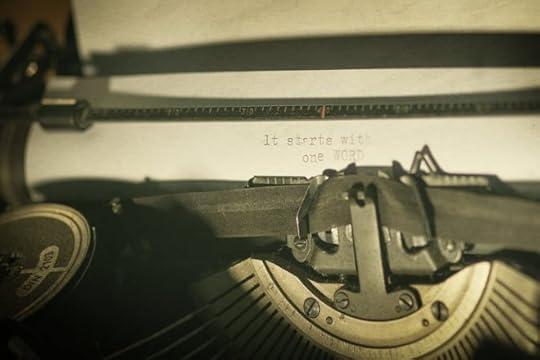10 Ridiculously Simple Steps for Writing a Book
Writing is easy. All you have to do is cross out the wrong words.
–Mark Twain
The hard part of writing a book isn’t getting published. With more opportunities than ever to become an author, the most difficult part of writing now isn’t publishing your work. It’s writing it in the first place.
As the author of four (soon to be five) published books, I can tell you without hesitation that the hardest part of this writing life is sitting down and doing the work. Books don’t just write themselves, after all. You have to invest everything you have into creating an important piece of work — and that requires discipline.
For years, I dreamed of writing a book. I believed I had important things to say, things the world needed to hear. But as I look back on what it took to actually become a published author, I realize how different the process was from my expectations.
To begin with, you don’t just sit down and write a book. That’s a misrepresentation of the writing process. You write a sentence, then a paragraph, then maybe if you’re lucky, an entire chapter. Writing happens in fits and starts and in little bits and pieces. It’s an iterative process.
The way you get this work down is not complicated. It is, in fact, very simple. You take one step at a time, then another and another. As I look back on the books I’ve written, I can see how the way these works were made was not as glamorous or as mysterious as I once thought.
What does it take to write a book? It happens in three phases:
Beginning: You have to start writing. This sounds obvious, but it may be the most overlooked step in the process. You write a book by deciding first what you’re going to write and how you’re going to write it.
Staying motivated: Once you start writing, you will face self-doubt and overwhelm and a hundred other adversaries. Planning ahead for those obstacles ensures you won’t quit when they come.
Finishing: Nobody cares about the book that you almost wrote. We want to read the one you actually finished, which means no matter what, the thing that makes you a writer is your ability not to start a project, but to complete one.
Below are 10 tips that fall under each of these three major phases plus an additional 10 bonus tips. I hope they help you tackle and finish the book you dream of writing.
BONUS: Download a quick reference guide for all 20 writing tips. Get them free here.
Phase 1: Getting started
1. Decide what the book is about
Good writing is always about something. Write the argument of your book in a sentence, then stretch that out to a paragraph, and then to a one-page outline. After that, write up a table of contents to help guide you as you write, then break each chapter into a few sections. Think of your book in terms of beginning, middle, and end. Anything more complicated will get you lost.
2. Set a daily word count goal
John Grisham began his writing career as a lawyer and new dad — in other words, he was really busy. Nonetheless, he got up an hour or two early every morning and wrote a page a day. After a couple years, he had a novel. A page a day is only about 300 words. You don’t need to write a lot. You just need to write often. Setting a daily goal will give you something to aim for. Make it small and attainable so that you can hit your goal each day and start building momentum.
3. Have a set time to work on your book every day
Consistency makes creativity easier. You need a daily deadline to do your work — that’s how you’ll finish writing a book. Feel free to take a day off, if you want, but schedule that ahead of time. Never let a deadline pass; don’t let yourself off the hook so easily. Setting a daily deadline and regular writing time will ensure that you don’t have to think about when you will write. When it’s time to write, it’s time to write.
4. Write in the same place every time
It doesn’t matter if it’s a desk or a restaurant or the kitchen table. It just needs to be different from where you do other activities. Make your writing location a special space, so that when you enter it, you’re ready to work. It should remind you of your commitment to finish this book. Again, the goal here is to not think and just start writing.
Phase 2: Do the work
5. Set a total word count
Once you’ve started writing, you need a total word count for your book. Think in terms of 10-thousand work increments and break each chapter into roughly equal lengths. Here are some general guiding principles:
10,000 words = a pamphlet or business white paper. Read time = 30-60 minutes.
20,000 words = short eBook or manifesto. The Communist Manifesto is an example of this, at about 18,000 words. Read time = 1-2 hours.
40,000–60,000 words = standard nonfiction book / novella. The Great Gatsby is an example of this. Read time = three to four hours.
60,000–80,000 words = long nonfiction book / standard-length novel. Most Malcolm Gladwell books fit in this range. Read time = four to six hours.
80,000 words–100,000 words = very long nonfiction book / long novel. The Four-Hour Work Week falls in this range.
100,000 words = epic-length novel / academic book / biography. Read time = six to eight hours. The Steve Jobs biography would fit this category.
6. Give yourself weekly deadlines
You need a weekly goal. Make it a word count to keep things objective. Celebrate the progress you’ve made while still being honest about how much work is left to do. You need to have something to aim for.
7. Get early feedback
Nothing stings worse than writing a book and then having to rewrite it, because you didn’t let anyone look at it. Have a few trusted advisers to help you discern what’s worth writing. These can be friends, editors, family. Just try to find someone who will give you honest feedback early on to make sure you’re headed in the right direction.
Phase 3: Finishing
8. Commit to shipping
No matter what, finish the book. Set a deadline or have one set for you. Then release it to the world. Send it to the publisher, release it on Amazon, do whatever you need to do to get it in front of people. Just don’t put it in your drawer. The worst thing would be for you to quit once this thing is written. That won’t make you do your best work and it won’t allow you to share your ideas with the world.
9. Embrace failure
As you approach the end of this project, know that this will be hard and you will most certainly mess up. Just be okay with failing, and give yourself grace. That’s what will sustain you — the determination to continue, not your elusive standards of perfection.
10. Write another book
Most authors are embarrassed by their first book. I certainly was. But without that first book, you will never learn the lessons you might otherwise miss out on. So, put your work out there, fail early, and try again. This is the only way you get better. You have to practice, which means you have to keep writing.
Every writer started somewhere, and most of them started by squeezing their writing into the cracks of their daily lives. That’s how I began, and it may be where you begin, as well. The ones who make it are the ones who show up day after day. You can do the same.
Bonus: 10 tips for staying motivated
Every year thousands of books go unfinished. One of the hardest parts of writing is staying motivated. Here are ten additional tips to help you maintain your momentum as you write your book.
11. Only write one chapter at a time
Write and publish a novel, one chapter at a time, using Amazon Kindle Singles, Wattpad, or sharing with your email list subscribers.
12. Write a shorter book
The idea of writing a 500-page masterpiece can be paralyzing. Instead, write a short book of poems or stories. Long projects are daunting. Start small.
13. Start a blog to get feedback early
Getting feedback early and often helps break up the overwhelm. Start a website on WordPress or Tumblr and use it to write your book a chapter or scene at a time. Then eventually publish all the posts in a hardcopy book.
14. Keep an inspiration list
You need it in order to keep fresh ideas flowing. Read constantly, and use a system to capture, organize and find the content you’ve curated. I use Evernote, but use a system that works for you.
15. Keep a journal
Then, rewrite the entries in a much more polished book format, but use some photocopies or scans of the journal pages as illustrations in the book. You could even sell “deluxe” editions that come with photocopied versions of the journal.
16. Deliver consistently
Some days, it’s easy to write. Some days, it’s incredibly hard. The truth is: inspiration is merely a byproduct of your hard work. You can’t wait for inspiration. The Muse is really an out-of-work bum who won’t move until you do. Show her who’s boss and that you mean business.
17. Take frequent breaks
Niel Fiore, the author of The Now Habit, says, “There is one main reason why we procrastinate: It rewards us with temporary relief from stress.” If you’re constantly stressed about your unfinished book, you’ll end up breaking your schedule. Instead, plan for breaks ahead of time so you stay fresh: minute breaks, hour breaks, or even multiple day breaks.
18. Remove distractions
Try tools like Ommwriter.com or Byword or Scrivener to let you write in a totally distraction free environment. That way, email, Facebook, and Twitter won’t interrupt your flow.
19. Write where others are writing (or working)
If you’re having trouble writing consistently by yourself, write where other people are also working. A coffee shop or library where people are actually working and not just socializing can help. If you’re in a place where other people are getting things done, then you’ll have no choice but to join them.
20. Don’t tweak as you go
Instead, write without judgment first, then go back and edit later. You’ll keep a better flow and won’t be interrupted by constant criticism of your own work. And you’ll have a lot more writing to edit when it’s time to do so.
Need help writing your book?
As the bestselling author of five books, I’ve developed a clear book writing framework that helps new authors succeed.
Without a step-by-step plan, most books go unfinished, and most of the ones that do get finished aren’t very good. But in my mini-course How to Write a Nonfiction Book, I’ll walk you through every step of the process and take out the guesswork so you can finish faster.
The entire course is only $97, and by applying what you learn, most authors can have a rough draft completed in just 90 days.
Get the tools you need to write your book. Stop dreaming and start writing with How to Write a Nonfiction Book.
What do you want to write a book about? What is your best writing advice? Share in the comments.





